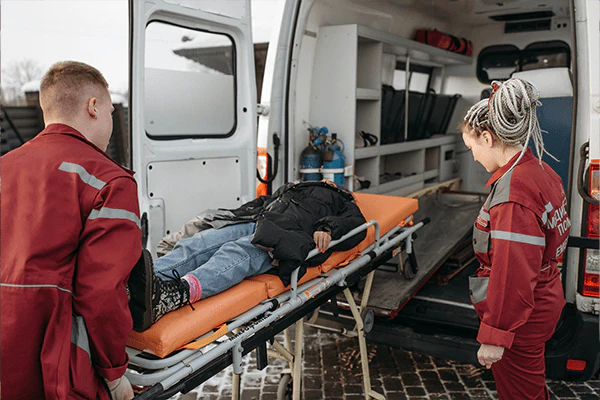In the chaotic and time-sensitive environment of a medical emergency, every piece of equipment plays a vital role in determining patient outcomes. Among the myriad of tools used by paramedics and emergency medical technicians (EMTs), the medical stretcher stands out as a foundational element of rescue and transport. Far more than just a means to move a patient, the medical stretcher is a critical component in rapid response, stabilization, and providing ongoing care. This post explores the indispensable role of medical stretchers in the crucial moments of emergency medical rescue.
1. Beyond Simple Transport: The Multifaceted Function
While their most obvious purpose is transport, medical stretchers in emergency settings are designed to serve multiple functions simultaneously:
- Rapid Extraction: Enabling quick removal of patients from potentially dangerous scenes (accidents, fires, unstable structures).
- Initial Stabilization: Providing a stable platform where initial assessments and life-saving interventions can begin immediately.
- Safe Immobilization: Offering features like straps and compatible immobilization devices (like backboards) to secure patients, especially those with suspected spinal or traumatic injuries, preventing further damage during movement.
- Mobile Treatment Platform: Serving as a base where medical personnel can continue to monitor vital signs, administer medications, manage airways, and perform other critical care procedures during transport to the hospital.
2. Key Roles in Action: Stretchers in Emergency Scenarios
The specific contributions of medical stretchers are evident in various stages of emergency response:
- Scene Management and Patient Access: Paramedics and EMTs quickly deploy stretchers to the patient’s location. Modern designs are often lightweight and foldable, allowing them to navigate challenging terrain or tight spaces to reach the patient swiftly.
- Swift and Secure Loading: Ambulance stretchers, in particular, are engineered for rapid and secure loading into the ambulance, often featuring wheels that lock into a fastening system to prevent movement during transit. This speed is critical in getting the patient en route to definitive care quickly.
- Maintaining Patient Condition During Transport: Once loaded, the stretcher allows EMS personnel unobstructed access to the patient to continue monitoring and providing care. Features like adjustable headrests and leg supports can help manage patient comfort and position for specific medical needs.
- Facilitating Seamless Handoff: Upon arrival at the hospital, the ambulance stretcher is designed for a smooth transfer to the emergency department (ED) stretcher or hospital bed, minimizing disruption to the patient and allowing for a quick transition of care.
3. Different Stretchers for Different Emergencies
The world of medical stretchers extends beyond the standard ambulance cot. Specialized stretchers are designed to tackle unique emergency challenges:
- Ambulance Stretchers (Cots): The most common type, designed for ruggedness, portability, and secure fastening within an ambulance. Often feature adjustable height and position.
- Scoop Stretchers: Designed to “scoop” a patient up from the ground by splitting lengthwise, minimizing movement of a potentially injured patient.
- Stair Chairs: Narrow stretchers with wheels and tracks designed specifically for safely moving patients up or down stairs in confined spaces.
- Basket Stretchers (Stokes Baskets): Used for carrying patients over rough terrain or in technical rescue situations.
The availability of these varied stretchers ensures that EMS teams have the right tool to safely extract and transport patients from almost any environment.
4. Protecting the Rescuers: Ergonomics in Emergency
Beyond patient safety, modern medical stretchers are designed with the ergonomics of EMS personnel in mind. Features like adjustable height, sturdy wheels, and intuitive locking mechanisms reduce the physical strain on paramedics and EMTs, helping to prevent career-ending injuries that can result from lifting and maneuvering patients in stressful, unpredictable situations.
5. Conclusion: The Unsung Hero of Emergency Medical Rescue
In the critical moments of a medical emergency, the medical stretcher is far more than a piece of transport equipment. It is a vital tool that facilitates rapid access, provides a stable platform for immediate care, ensures patient immobilization, and enables safe and efficient transport to definitive medical attention. Its diverse types are tailored to address specific rescue challenges, and its ergonomic design protects the dedicated professionals who use it. The medical stretcher is truly an unsung hero in the chain of survival, playing a key role in saving lives and ensuring the safest possible transition from the scene of an emergency to the care that follows.

